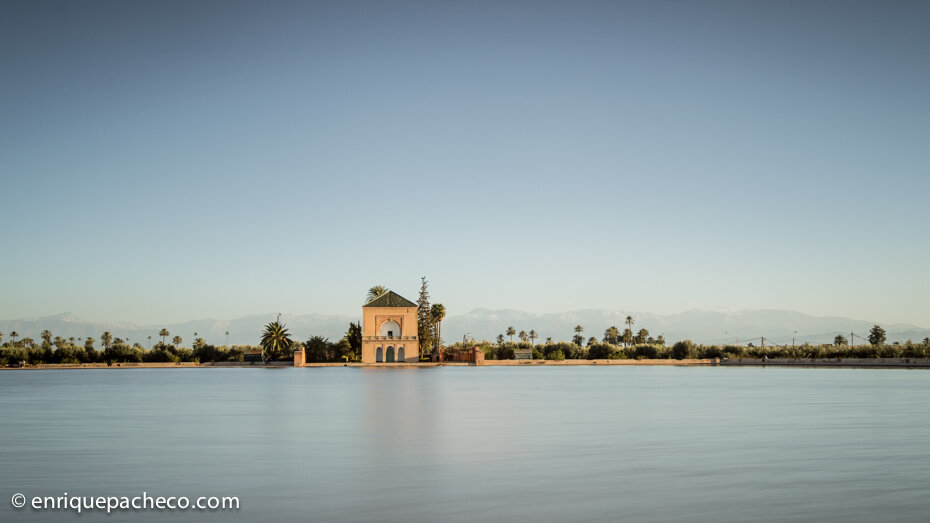The Maghreb, Episode 2: The Journey
In this episode of what will be a trilogy about my adventure in Morocco, I will describe the path I followed along the Maghreb territory. I will give an overview from my arrival to the country via ferry from Tanger to the desert of Erg Chebbi, near the border of Algeria. I will describe the fantastic landscapes and the culture on these places and illustrate the story with photos.
Fes, Capital of Islam
The first stop on my trip, and one of the great attractions of it, was the city of Fes. This imperial city is the capital of Islam in Morocco, as well as religious and cultural center of the country. Because of this and its great traditions of craftsmanship, the three days I spent in this city were very productive resulting in fantastic images of Islamic architecture, art, street atmosphere and its people.
One of the most picturesque places that the photographer can find in Fes is the tannery, located in the old Medina. That location that captivated me for hours. There you can see, and for a few dirhams also photograph, an ancient way of working that’s is quite a show – I mean the process of dyeing and tanning leather.
But in the old imperial city of Fes agglutinate all types of artisans such as blacksmiths, potters, weavers, etc.. I would need to make a one-hour documentary to show everything that I shot there in just three days. This combined with the marvelous madrassas, or Islamic schools, covered with beautiful details carved in wood and plaster, give this city a cultural and artistic uniqueness.
Merzouga and Erg Chebbi, the desert
The next part of my journey is certainly the one that has characterized it the most – my arrival to Merzouga and Hassi-Labied. These two small villages are just 50 km away from Algeria and are well-known for being at the foot of the Erg Chebbi desert. This sea of dunes is 22 km long and 5 km wide and is a delight to any photographer. These are the images of sand and adventures we’ve all seen in the National Geographic magazines.
It’s easy to feel like a pioneer when exploring a landscape as unique and impressive as this, but even more so if you do it on the back of a camel and are being guided by a local Berber. The experience of spending the night in the middle of the desert dunes next to a camp fire with just your guide, your camel and your photographic equipment, make the whole trip and the thousands of kilometers totally worthwhile.
Both sunrise and sunset are magical at the dunes. The soft light of this time of year (February) bathed the crest of the steep dunes to make them shine like brass artisans. But it was the night that caught my attention even more – the night with millions of stars that crowded the entire sky, leaving little room for the emptiness. That’s because the night was governed by the new moon, which facilitated the capture of the Milky Way.
Skoura, the oasis of a thousand palms
The small town of Skoura is known as a traditional stopping place for caravans of camels, coming from the desert with goods, which later will be sent to the big cities. But what characterizes this fantastic place the most is its location near majestic Kasbahs and especially the edge of a vast palmery that’s under being protected by UNESCO and is known as the “Oasis of a thousand palms”.
I enjoyed getting lost in the lush greenery of the palmery and went to photograph the sunset from the roof of a Kasbah.
But undoubtedly the highlight came at night. I talked to the manager of the famous Kasbah Amridil, known for appearing in numerous movies and commercials, to let me get on the roof of this Kasbah-Hotel and enjoy the amazing view. I shot the great view of Kasbah for several hours under the starry sky, carefully exposing to compensate the difference between the bright Kasbah and the dark sky. I think that the result speaks for itself.
Marrakech, the Imperial City
The last part of my trip, at least photographically speaking, brought me to the city of Marrakech. Here a traveler or photographer will find a busy city, filled with vendors of all kinds as well as improvised guides that offer their services to take them anywhere.
There are many attractions in Marrakech – it’s full of Mosques, Madrassas, souks and of course the main square “Djemaa el-Fna”, where in the evening you can find countless performances of music, dancing and of why not, food of all kinds in stalls that fill the esplanade
Perhaps the most enjoyable filming locations in Marrakech are the narrow streets that run through the old and chaotic medina. Here the light comes through the roofs covered with wooden slats, timidly reaching the shops installed inside. Dust from continuous activity in the partially paved streets does the rest. What a visual feast!
Another place that fascinated me was the Menara Gardens, a peaceful green area just minutes from the city center. It’s a place to go for a walk when the evening falls to escape from the noise and bustle of the busy center.
Morocco has exceeded all my expectations as a traveler and even more as a photographer/videographer. This is a country where they know how to welcome visitors in every possible way – offering warm hospitality, always willing to help you to get to the location where to capture the best pictures, sometimes in exchange for a few dirhams. Well deserved in most cases. This has been a very special and successful trip party cause of improvising my itinerary and adapting it to the needs and emotions of the moment.
I will definitely return to Morocco soon, as this country has caught my eye, and I can’t wait to re-experience its magic. I hope that next time I will be accompanied by many of you. Would enjoy sharing my favorite places with friends and colleagues.
If you enjoyed this, check out an article by my friends from Overland Site about their trip to Morocco, here.
See you soon!











